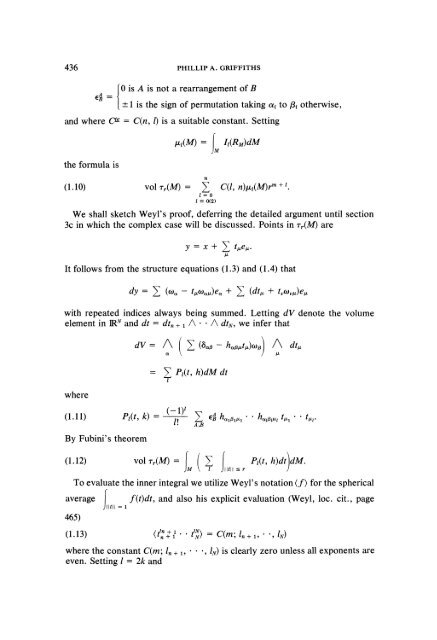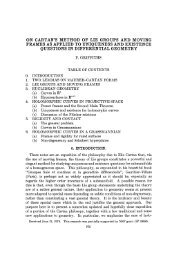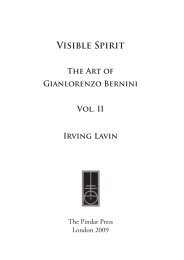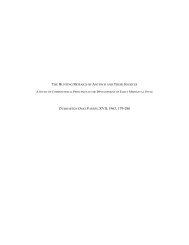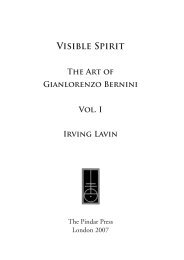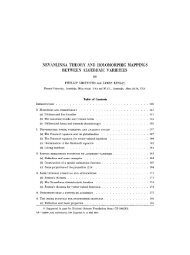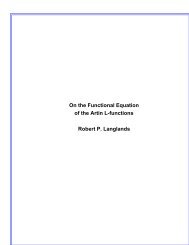View PDF - Project Euclid
View PDF - Project Euclid
View PDF - Project Euclid
You also want an ePaper? Increase the reach of your titles
YUMPU automatically turns print PDFs into web optimized ePapers that Google loves.
436 PHILLIP A. GRIFFITHS<br />
I0<br />
is A is not a rearrangement of B<br />
| _+ is the sign of permutation taking ai to/3i otherwise,<br />
and where C te C(n, l) is a suitable constant. Setting<br />
,(M) It(R,)dM<br />
the formula is<br />
(1.10) vol rr(M) C(l, n)txt(M)rm + .<br />
/=0<br />
0(2)<br />
We shall sketch Weyl’s proof, deferring the detailed argument until section<br />
3c in which the complex case will be discussed. Points in ’r(M) are<br />
y x+ t.e..<br />
It follows from the structure equations (1.3) and (1.4) that<br />
dy (toe- tto.)e + (dt. + tto..)e.<br />
with repeated indices always being summed. Letting dV denote the volume<br />
element in IR N and dt dtn / 1/ / dtN, we infer that<br />
where<br />
(1 11) Pt(t, k)<br />
By Fubini’s theorem<br />
dV= / ( (-h.t.)toz) /<br />
’ Pl(t, h)dM dt<br />
(- 1)t<br />
I!<br />
A,B<br />
h11"1"" htmt"l"" tm.<br />
To evaluate the inner integral we utilize Weyl’s notation {f} for the spherical<br />
average<br />
465)<br />
f(t)dt, and also his explicit evaluation (Weyl, loc. cit., page<br />
(1.13)<br />


